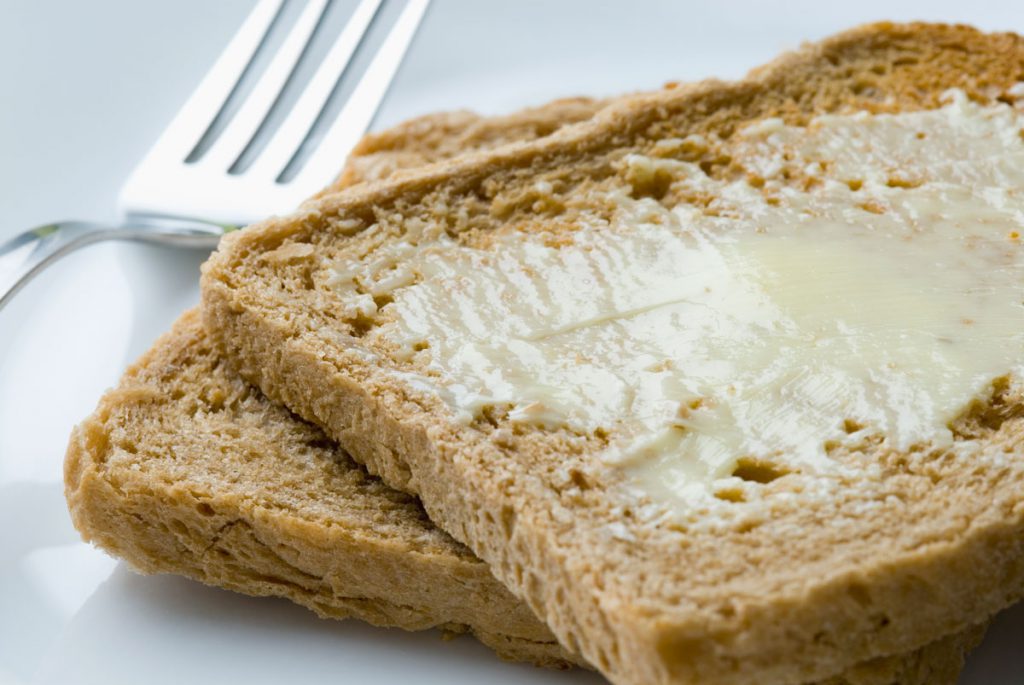It’s an age-old question, and is something that probably ranks as one of the most annoying things to ever happen to a person (getting hit by a bus, and pissing on your own shoes excepted), but why does buttered bread always land butter side down?!
Science Gimp knows the answer, and after reading this article… you will too!
Statistically, based on recorded droppings of bread and when taking into account the average height that a slice is dropped from (1.229m), accelerating at 9.8m/s/s, the average number of rotations during freefall (if any) over the height and time of fall, air density, temperature and current state of Brownian motion of the airborne particles, angle of attack, horizontal velocity at time of drop, applying Bernoulli’s principle of pressure difference creating a lift force and postulating that the buttered side would have a lower aerodynamic resistance than the unbuttered side, toasted or untoasted and thickness of spread, we can note that all this makes absolutely and positively chuff all difference………
Bread has exactly the same chance of landing one side up as the other.
The only variable is the butter or lack thereof on the main faces (or planes) of the bread. We can state with a certain level of authority that the consistency of the buttered face is similar to that of a weak adhesive spread over a large surface area – creating a potentially powerful “sticky agent” – powerful in relative terms of the forces we’re discussing. In fact butter itself is just a series of butterfat globules stuck together when the phospholipid membranes are broken in the churning process. Therefore (and test have shown this) bread is more likely to “stay” face down when it hits the ground butter side down (or after a resultant “roll”/”rebound” if it hits butter side up) – because it has stuck to the ground.
The butter across the entire plane of the bread very simply acts as a glue and has enough latent “sticky” force (due to the wide surface area relative to the mass of a slice of bread) to counter any reactive (bouncy) kinetic forces as the bread hits the ground. The unbuttered non-sticky side does not have this arresting force – and thus has a far greater tendency to “bounce” (in the lightest sense of the word) returning the bread to a state of “semi-freefall”, in turn, creating an increased probability of it turning over – and staying turned over, should it hit butter side down on the second attempt.
In short – buttered bread doesn’t always land butter side down – but should it do so – it has a greater tendency to stay that way. Either way, you’re better off throwing it in the bin or giving it to the cat and getting a fresh slice… carbohydrates-dustmite combinations can lead to disturbed patellas.



Wow! Thanks Science Gimp, that really has put my mind at ease. 🙂
Now that’s science!
So…
A cat always lands on it’s feet, but if you butter it’s back…?
(I tried the butter side down experiment with this mornings toast. Results concurred but the fella was pi$$ed off..??)
If a cat always lands on its feet and buttered toast lands butter side up – what will happen if you strap the toast to the cats back?
so what r more things like that because i have a science projet and we need to do somthing like this but we cant use this because it was an example in the book plz help before Monday
PLZ help i just sent the message above and im freaking out plz help